Sitting at a desk all day might seem harmless, but your lower back would probably disagree. If you’re an office worker, chances are you’ve felt that dull ache creep in after hours of being hunched over your keyboard. The good news? You don’t need to overhaul your entire routine to fight back against low back pain. A few simple exercises can go a long way in keeping your spine happy and pain free. Let’s dive into the best exercises you can do to keep your back strong, flexible, and pain free.
Why Office Workers Are Prone to Low Back Pain?
Before we get into the exercises, let’s understand why office workers are particularly vulnerable to back pain. Prolonged sitting, poor posture, and a lack of movement can cause stiffness and weakness in the lower back muscles. Over time, this can lead to muscle imbalances, poor spinal alignment and ultimately, pain. The key to preventing this is movement and strengthening the right muscles.
The Best Exercises to Prevent Low Back Pain
Here are some simple yet effective exercises you can incorporate into your day to keep back pain at bay. Most of these can be done right at your desk or in a small space.
1. Seated Spinal Twist (Great for Desk Workers)
Sitting all day compresses your spine, making this stretch a great way to release tension.
How to do it:
Sit upright in your chair with both feet flat on the floor.
Place your right hand on the back of the chair and your left hand on your right thigh.
Gently twist your torso to the right, looking over your shoulder.
Hold for 15–30 seconds, then switch sides.
Why it works: This helps improve spinal mobility and relieves tension in the lower back.
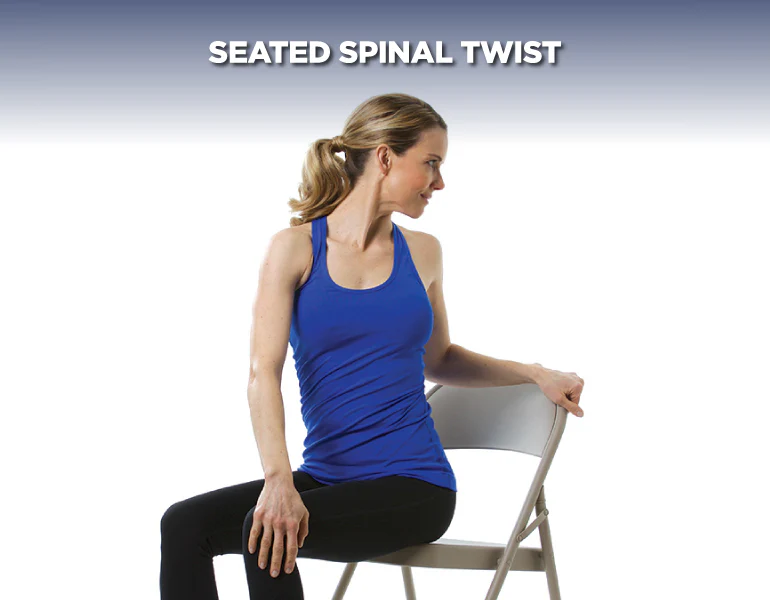
2. Cat-Cow Stretch (Perfect for Mobility)
A classic yoga move but on a chair, that keeps your spine mobile and flexible.
How to do it:
Sit at the edge of your chair with feet flat on the floor, hands resting on your knees.
Arch your back, push your chest forward, lift your chin, and look up while drawing your shoulders back.
Round your spine, tuck your chin towards your chest, and pull your belly button in as you push your back towards the chair.
Round your spine, tuck your chin towards your chest, and pull your belly button in as you push your back towards the chair.
Why it works: This movement lubricates the spine, improves mobility, and reduces stiffness from prolonged sitting.
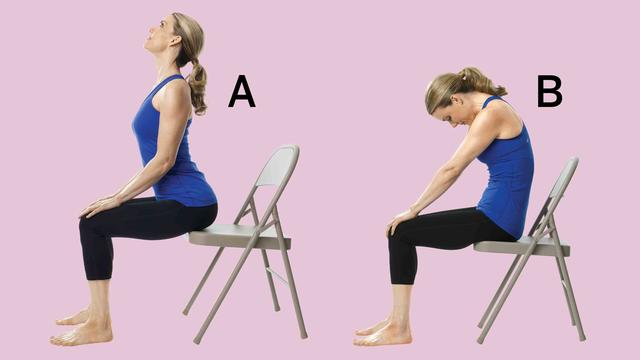
3. Glute Bridges (Strengthen the Core and Glutes)
Sitting weakens the glutes, which play a crucial role in supporting your lower back.
How to do it:
Lie on your back with your knees bent and feet flat on the floor, hip-width apart.
Press through your heels and lift your hips towards the ceiling.
Squeeze your glutes at the top and hold for a second.
Slowly lower down and repeat for 12–15 reps.
Why it works: This strengthens the glutes and core, reducing strain on the lower back.
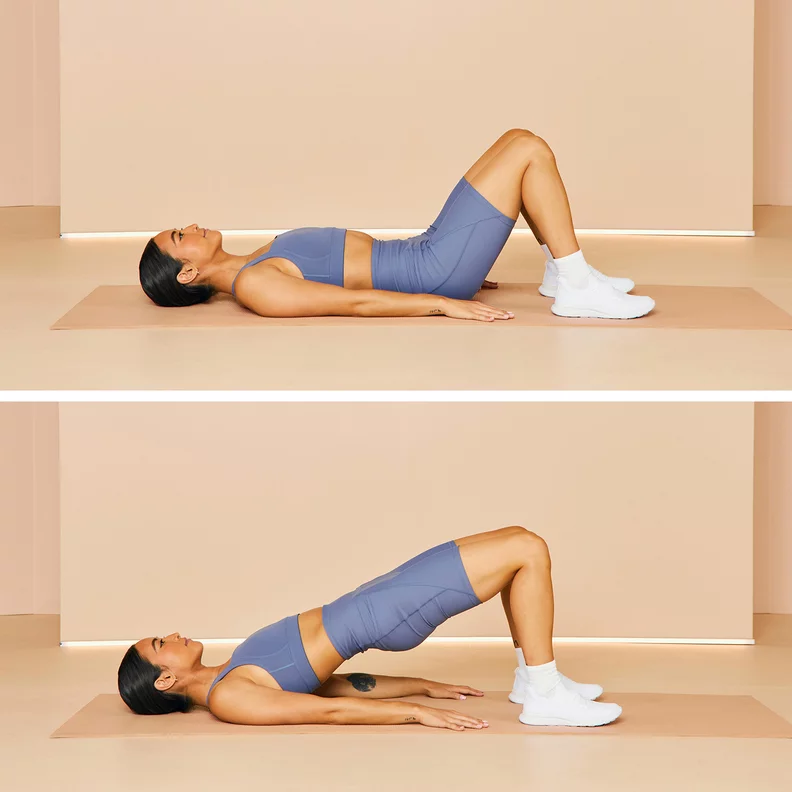
4. Standing Hip Flexor Stretch (Counteract Tight Hips)
Sitting tightens the hip flexors, pulling on the lower back and causing discomfort.
How to do it:
Stand with one foot forward and the other extended behind you in a lunge position.
Keep your back straight and gently push your hips forward until you feel a stretch in the front of your hip.
Hold for 20–30 seconds and switch sides.
Why it works: This stretch relieves tension in the hip flexors, reducing strain on the lower back.
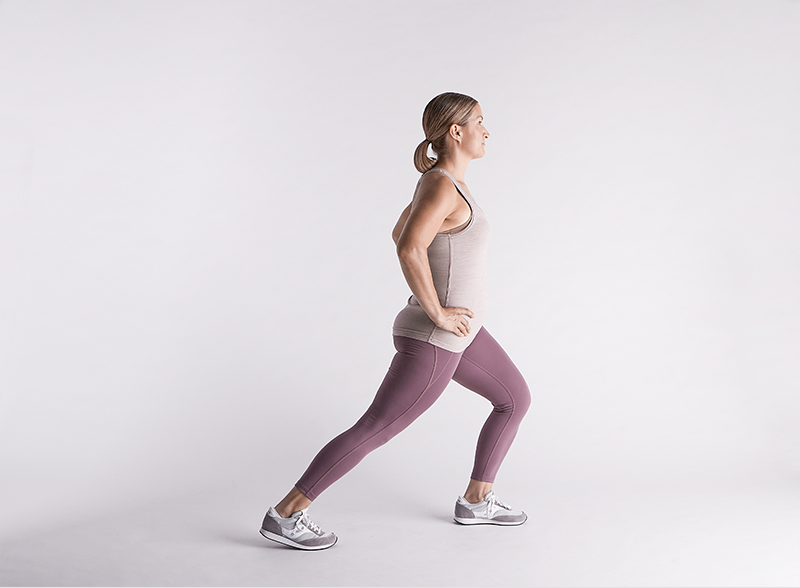
5. Wall Sits (Full Lower-Body Engagement)
An underrated exercise that strengthens the lower back, core, and legs.
How to do it:
Stand with your back against a wall and lower yourself into a sitting position (as if sitting on an invisible chair).
Keep your knees at a 90-degree angle.
Hold for 20–30 seconds (or longer as you get stronger).
Why it works: Strengthens the muscles that support your lower back, improving posture and stability.
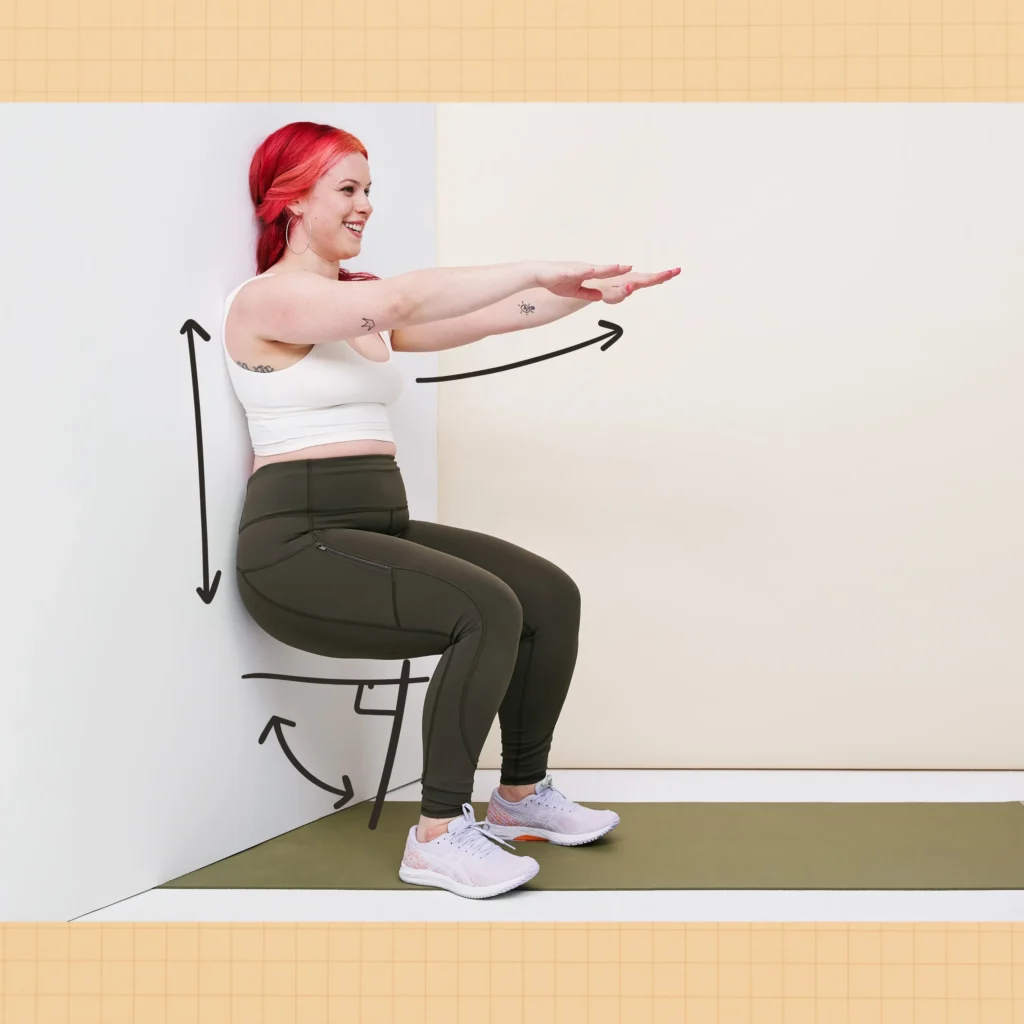
6. Desk-Based Posture Reset (Perfect for Quick Breaks)
A quick exercise to realign your spine and reset your posture.
How to do it:
Sit at the edge of your chair with your feet flat on the floor.
Roll your shoulders back and down.
Pull your chin back slightly (as if making a double chin).
Hold this posture for 10 seconds and repeat throughout the day.
Why it works: Reinforces proper posture and prevents slouching, which contributes to back pain.
Bonus Tips to Keep Your Back Happy
Besides exercises, here are some extra tips to prevent low back pain at work:
Move every 30–60 minutes– Stand up, stretch, or walk around.
Adjust your workstation– Ensure your screen is at eye level and your chair supports your lower back.
Use a lumbar roll– A small cushion or rolled towel behind your lower back can improve posture.
Strengthen your core– A strong core takes the load off your lower back.
Stay hydrated– Dehydration can contribute to muscle tightness and discomfort.
Final Thoughts
Low back pain doesn’t have to be an inevitable side effect of office work. By incorporating these simple exercises into your daily routine, you can keep your spine healthy, your posture upright, and your workdays pain free. Try these movements today and feel the difference in your back your body will thank you. However, if you experience persistent pain despite regular stretching and strengthening, it’s always a good idea to get it checked by a healthcare professional.
To book your appointment, call on the number below-
📞 Call 01604 385343 (Northampton) or 01908 713973 (Milton Keynes) or Book Online today!

